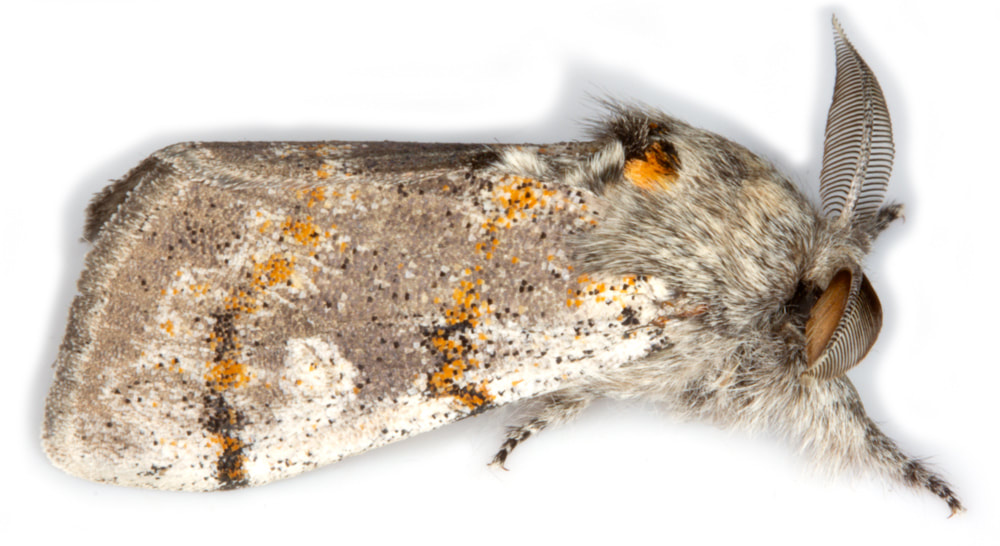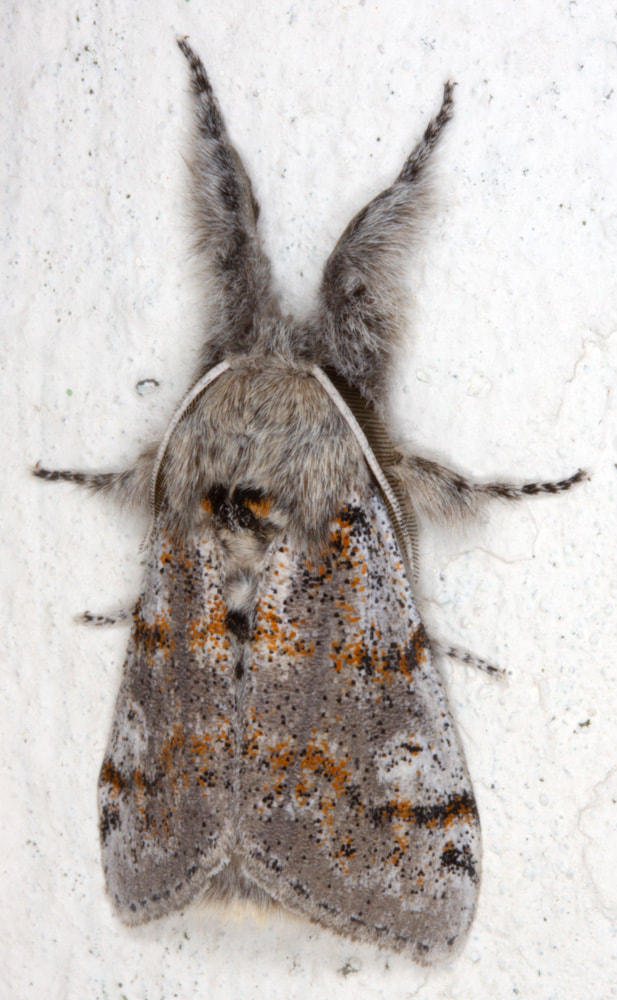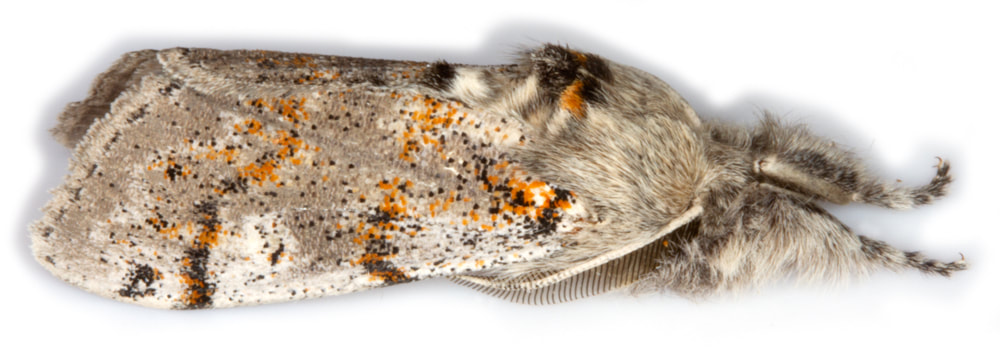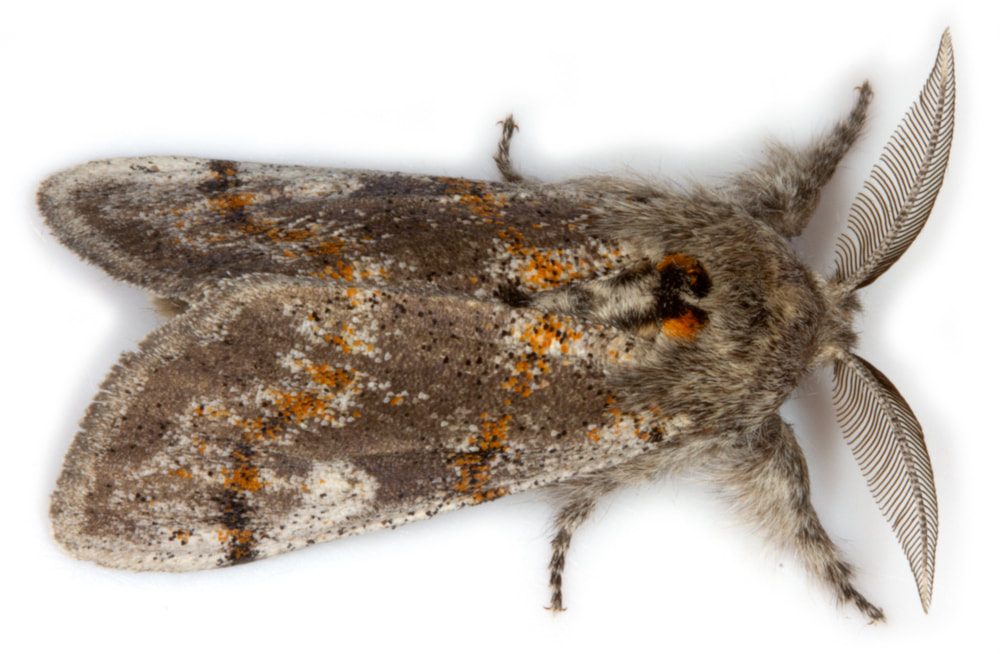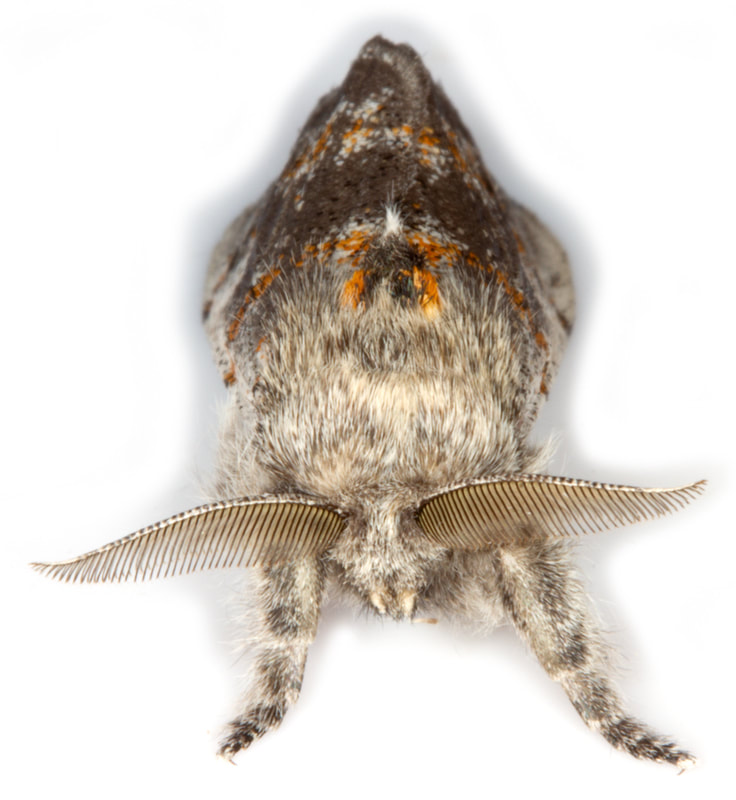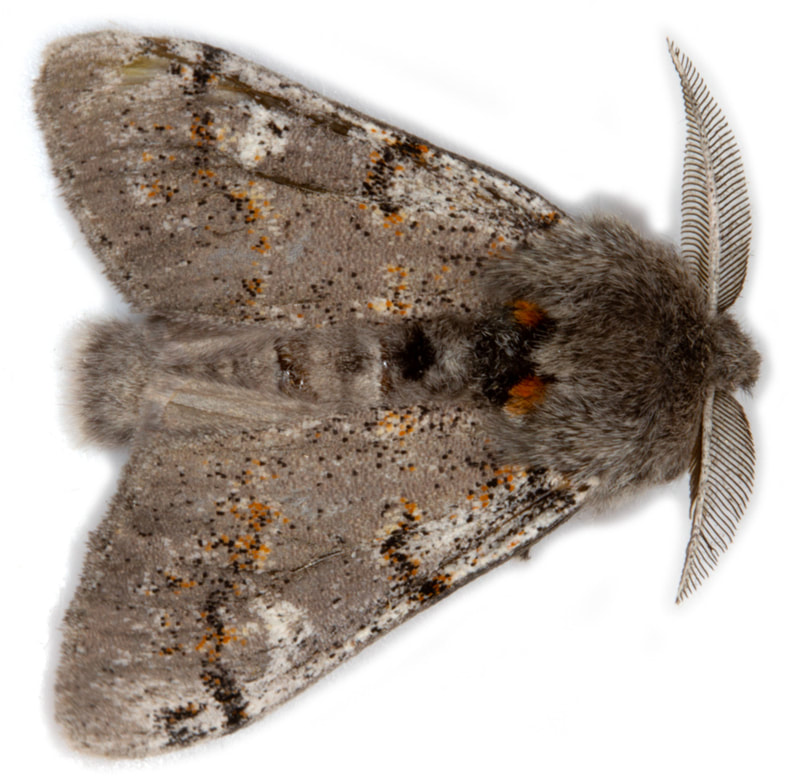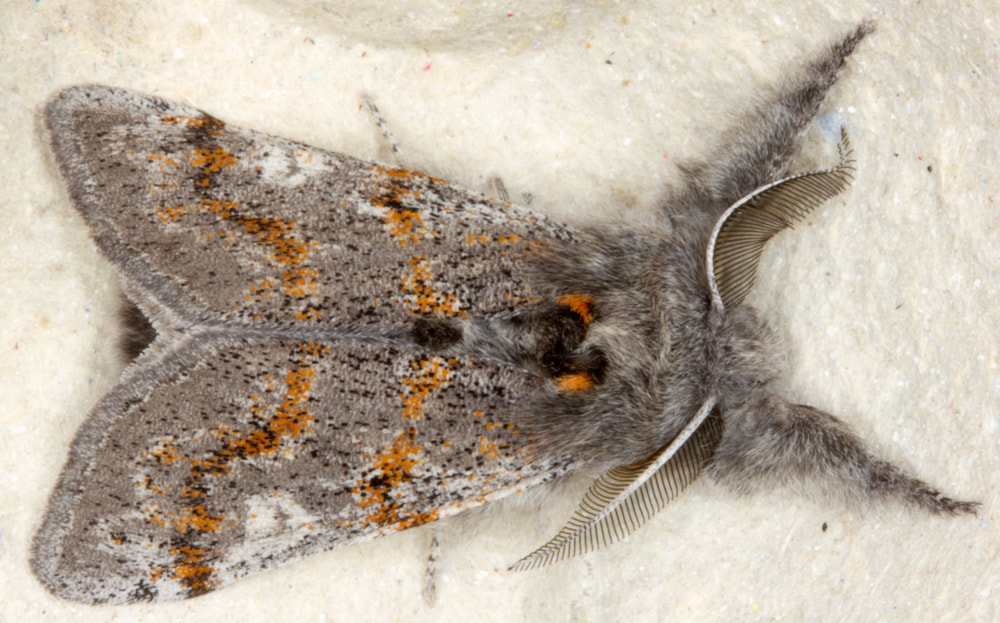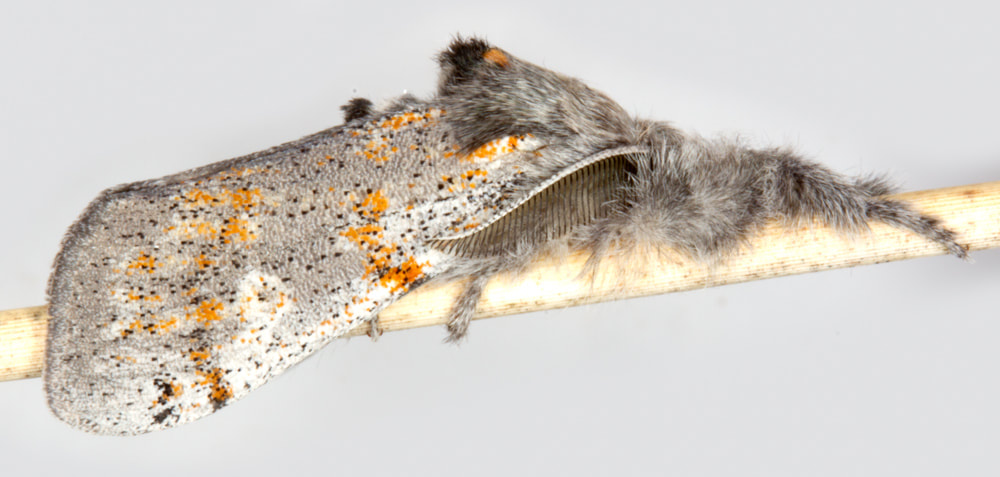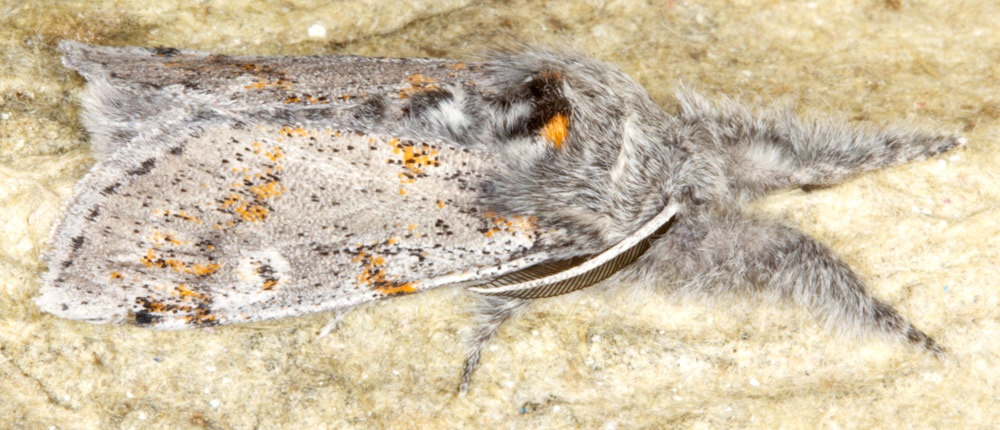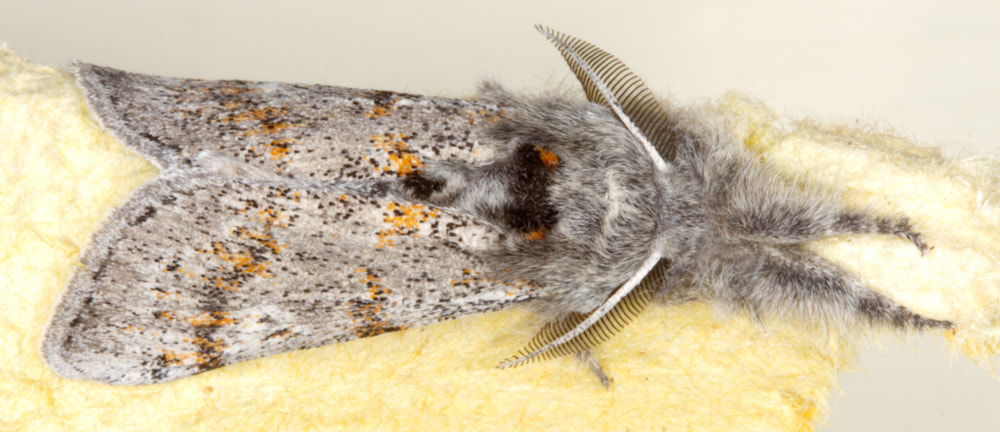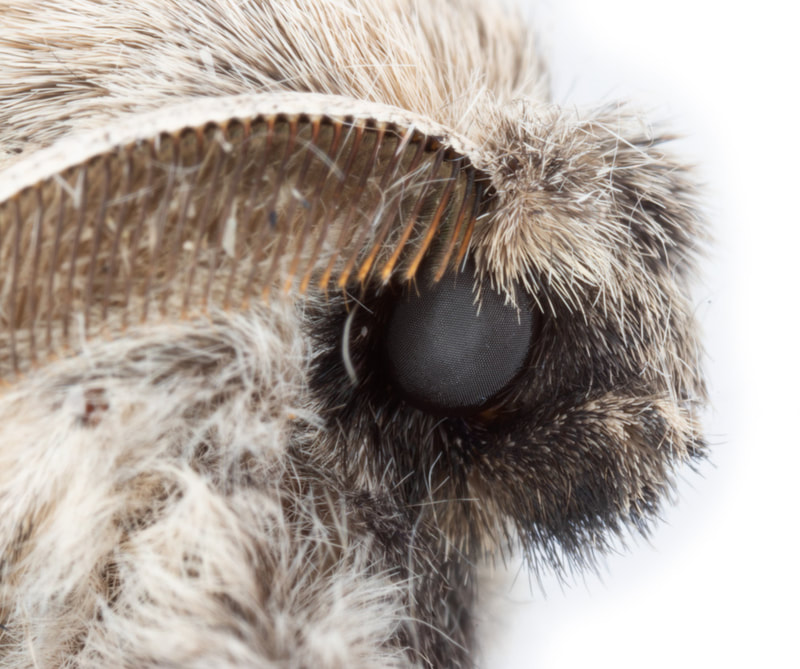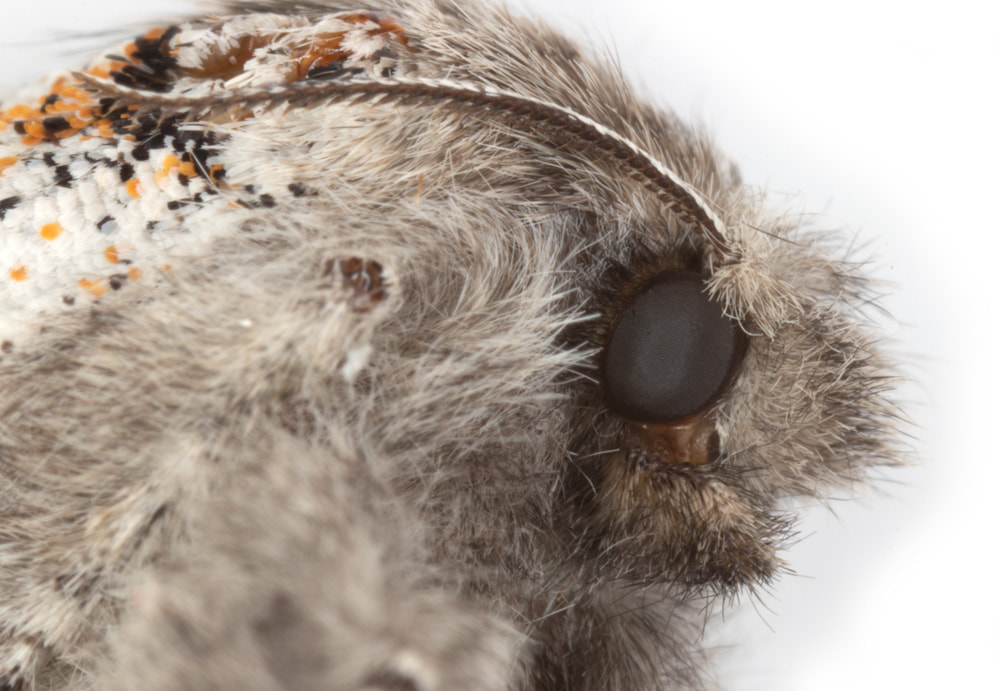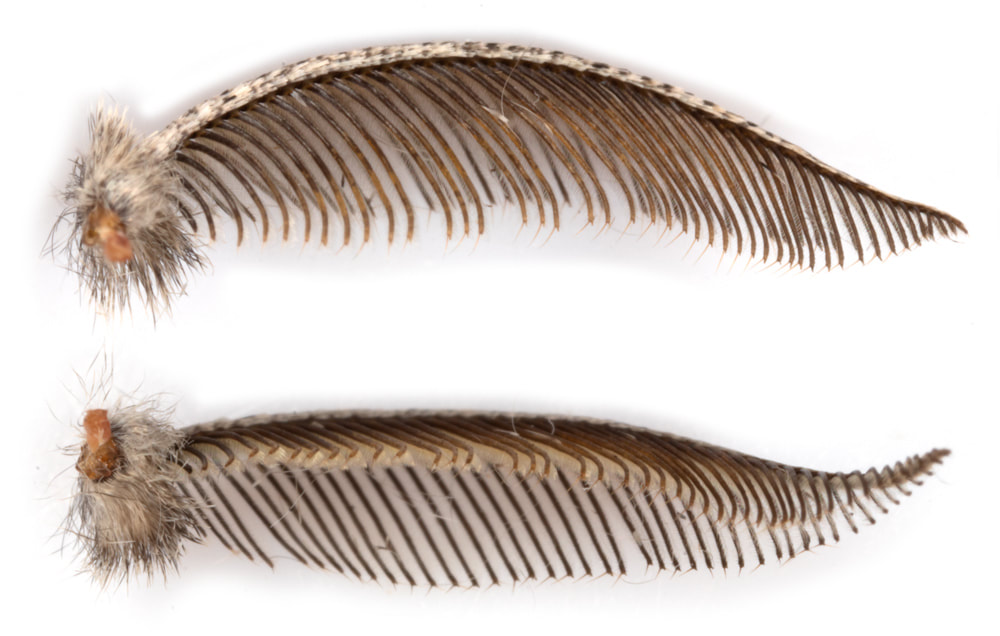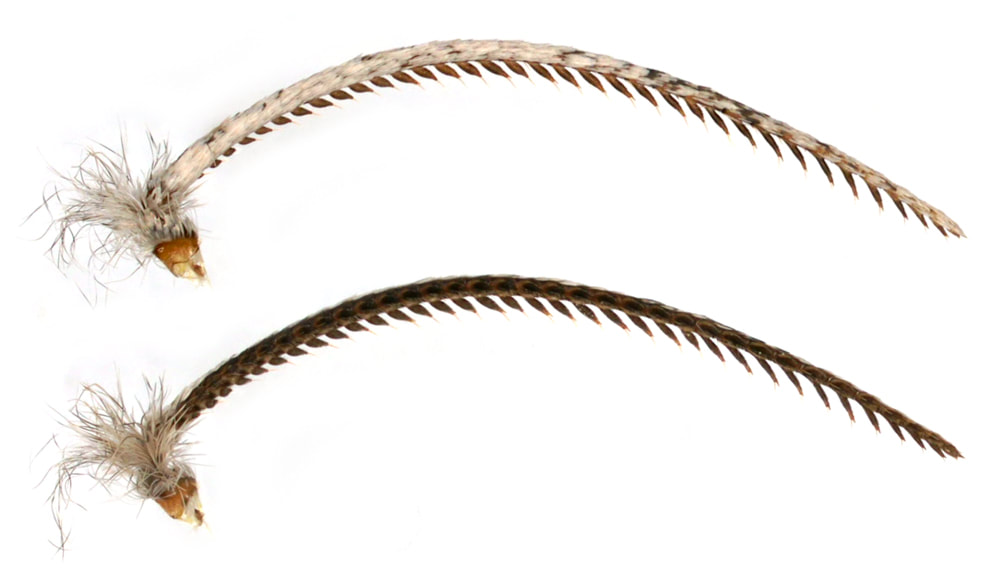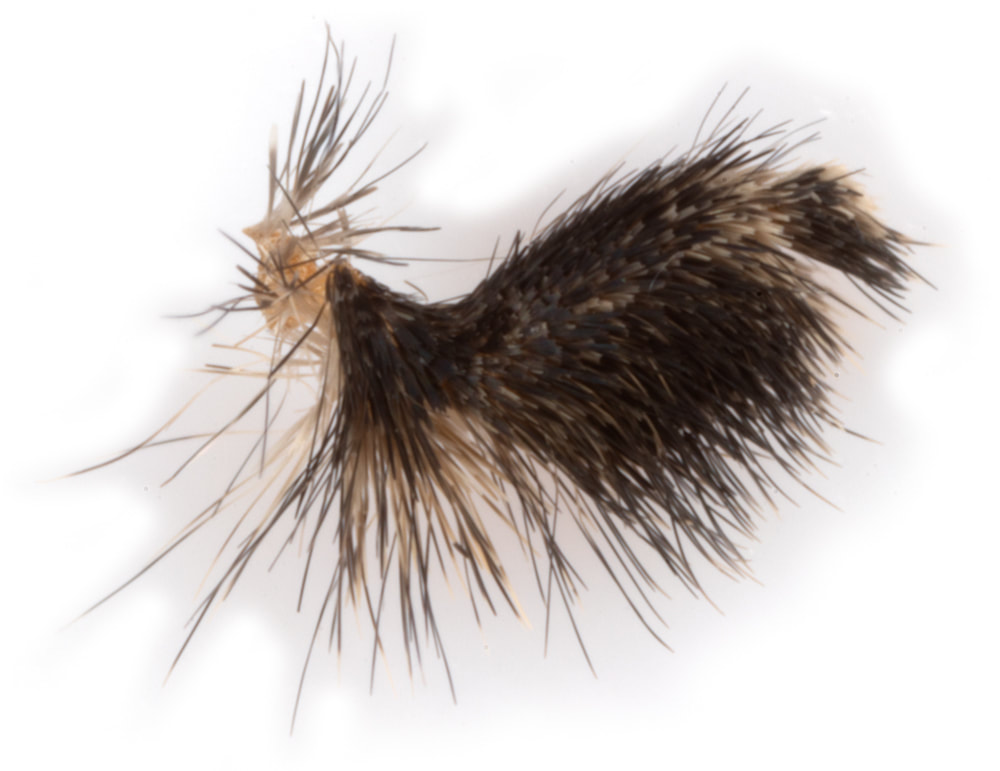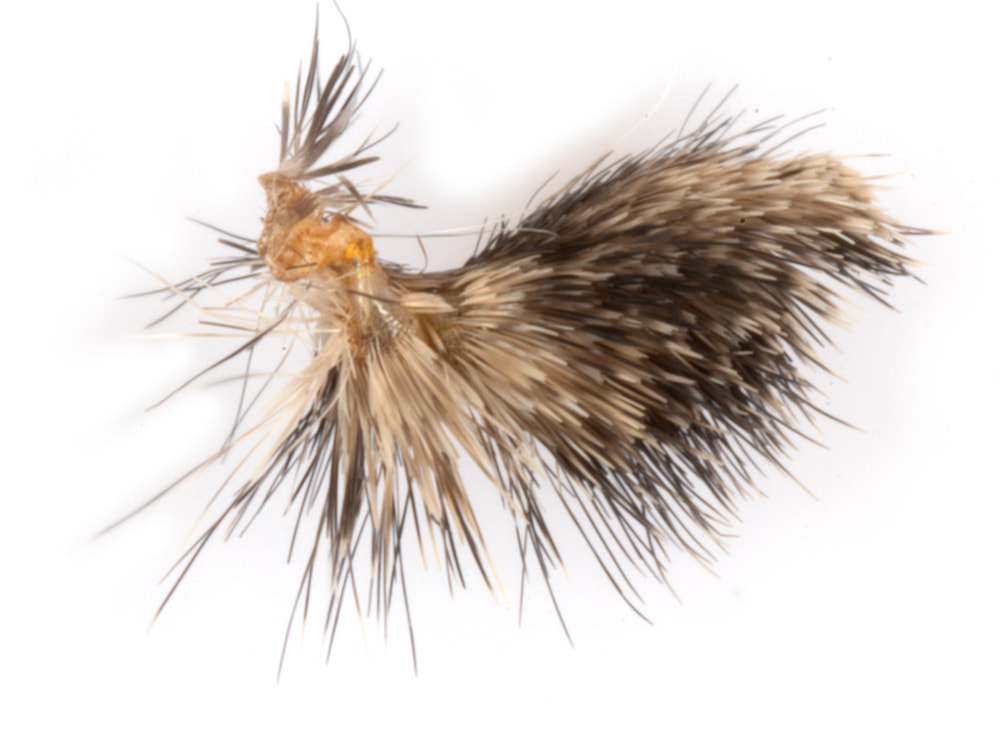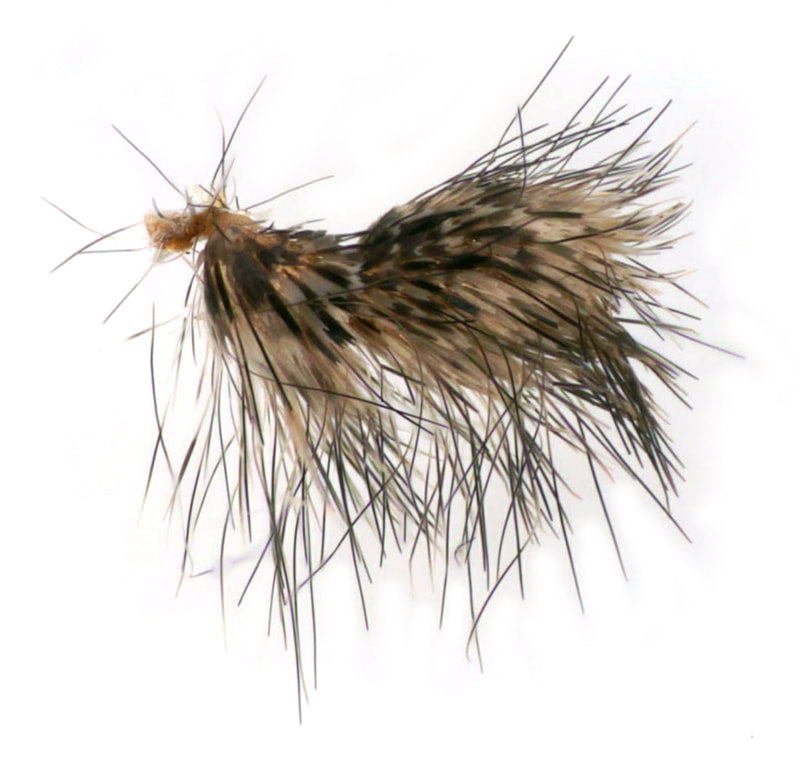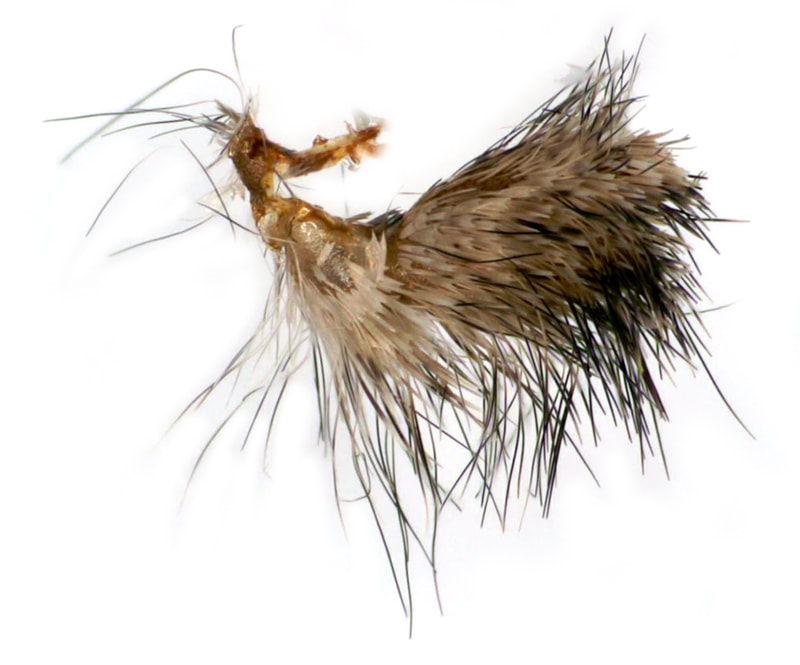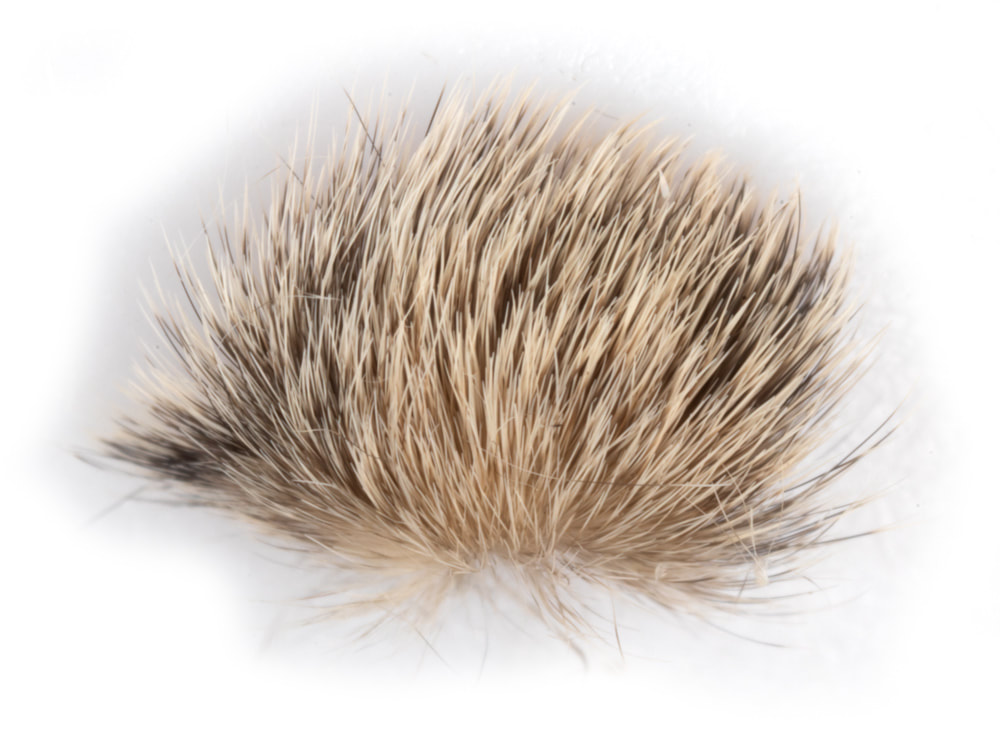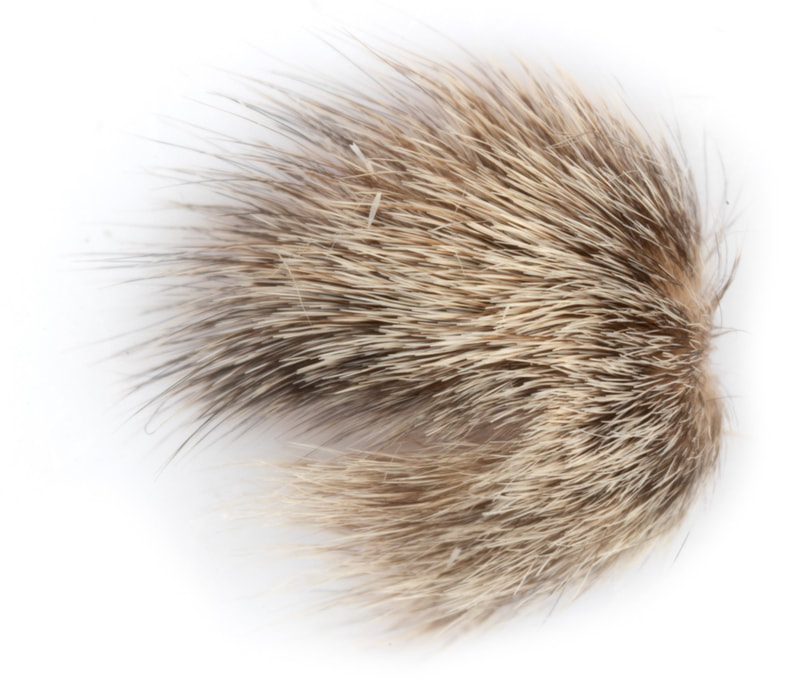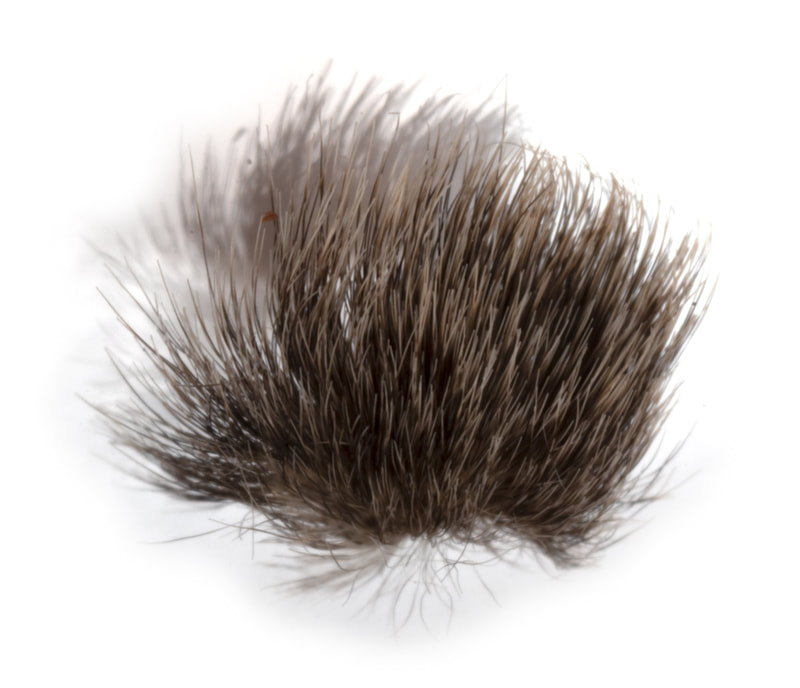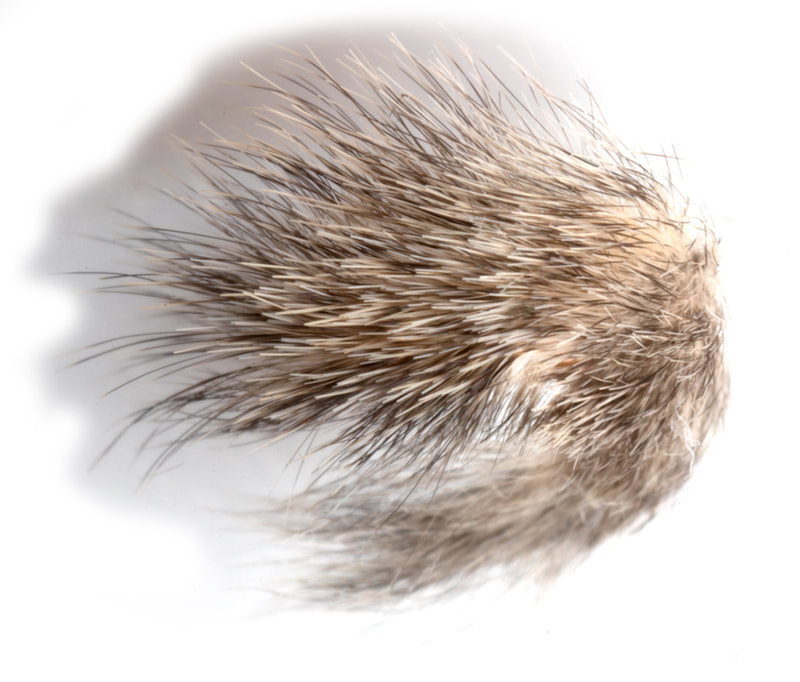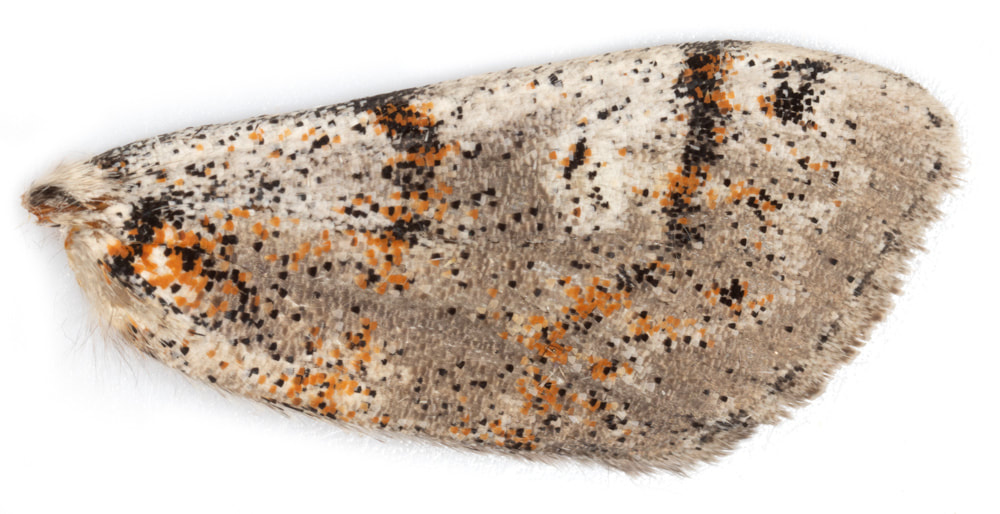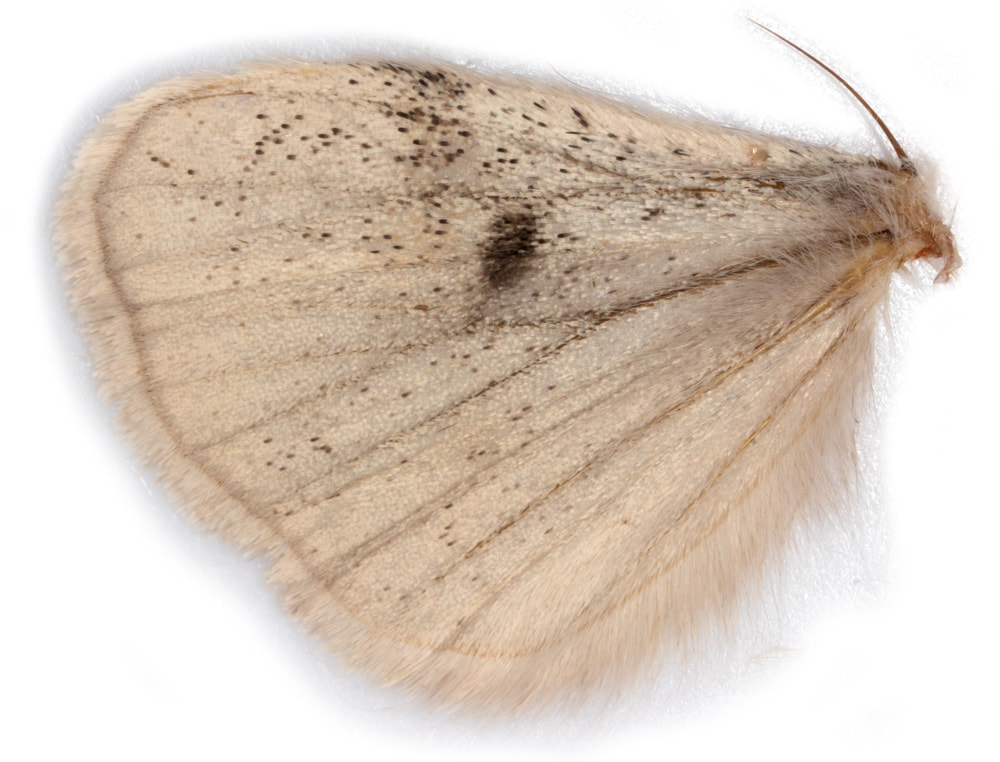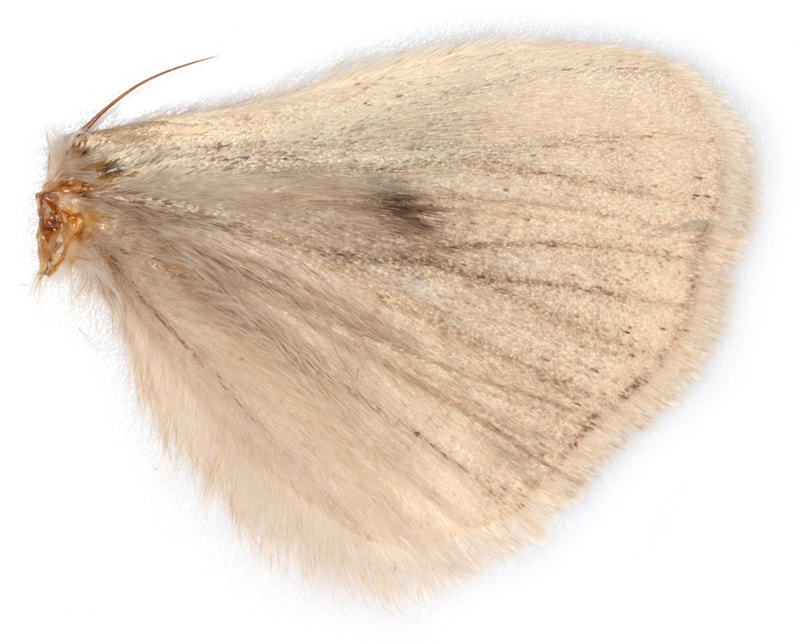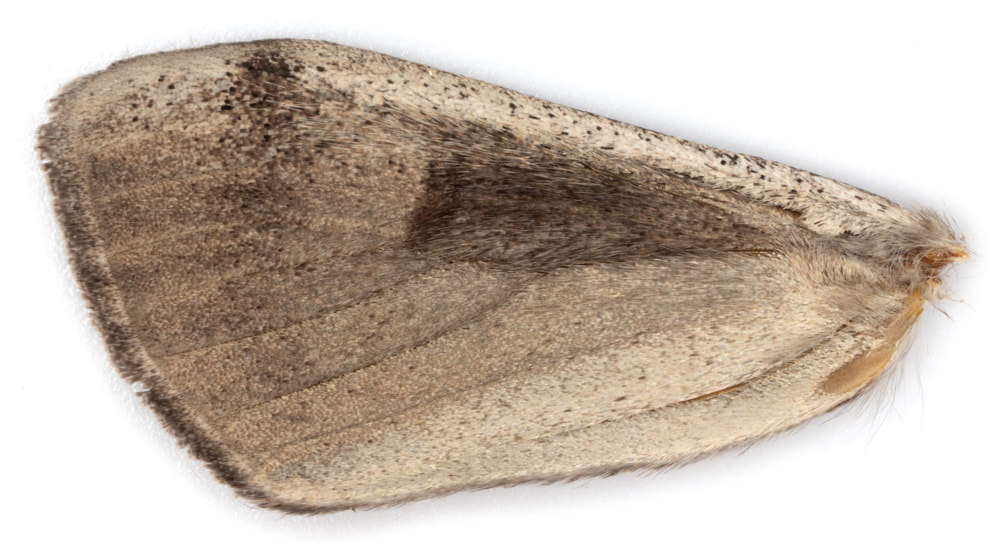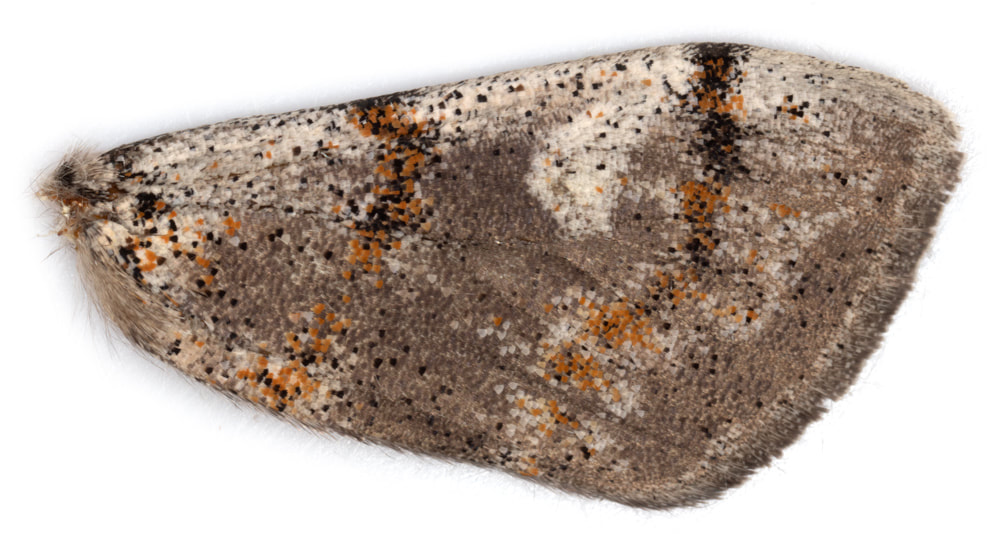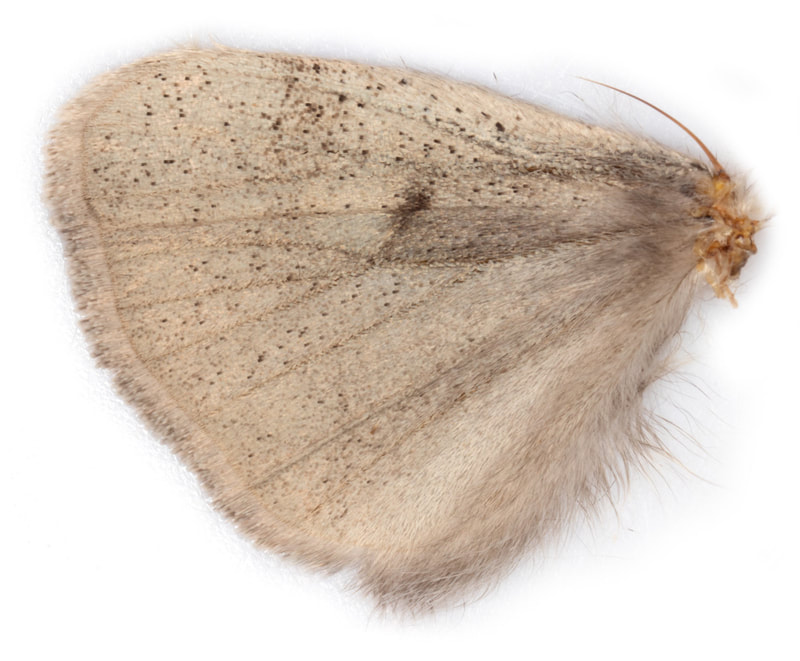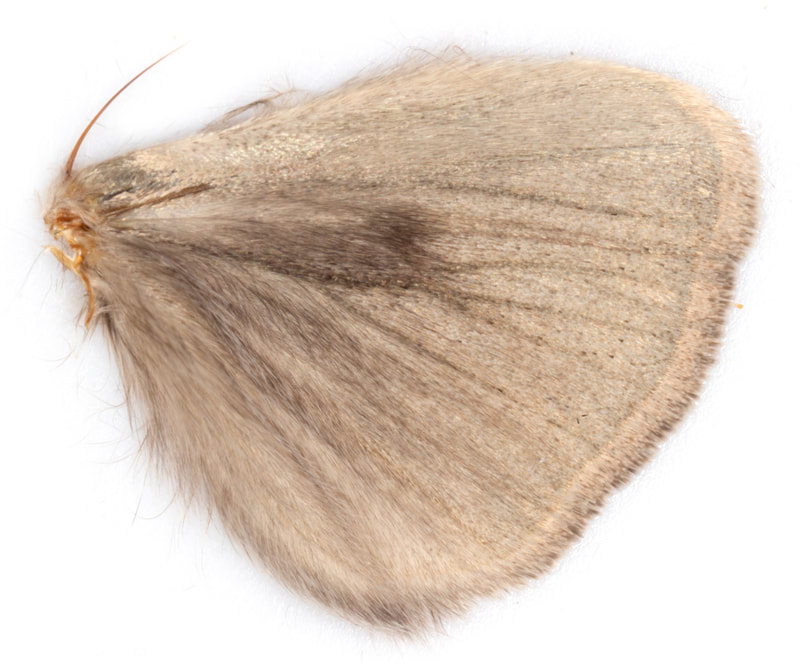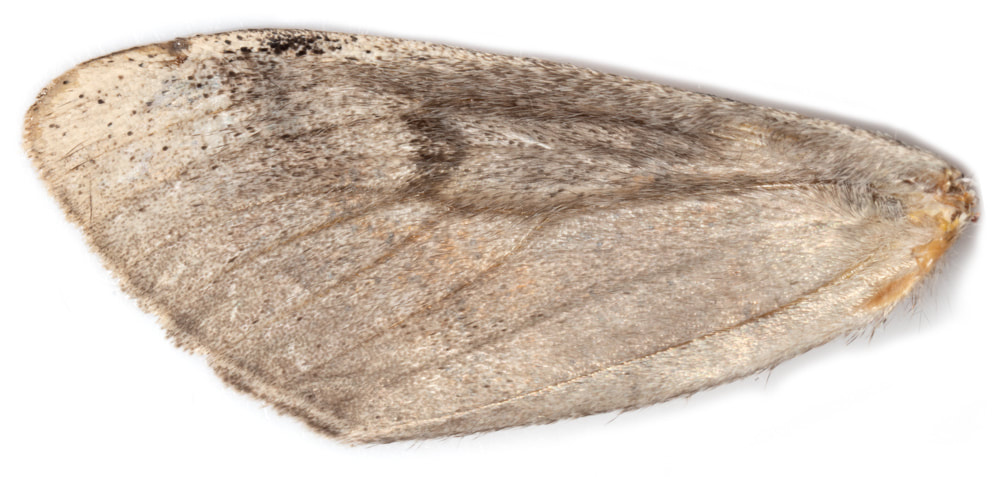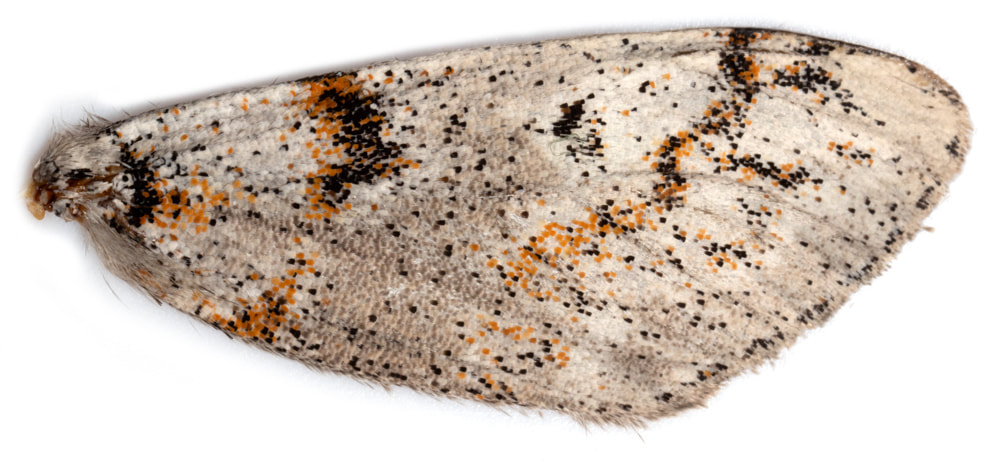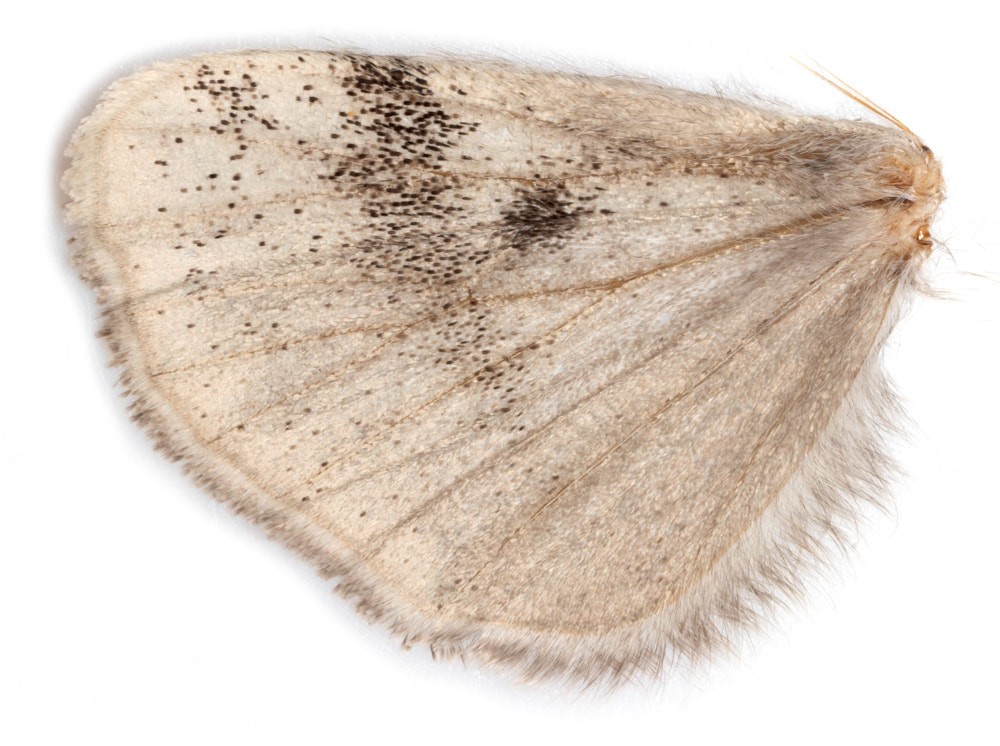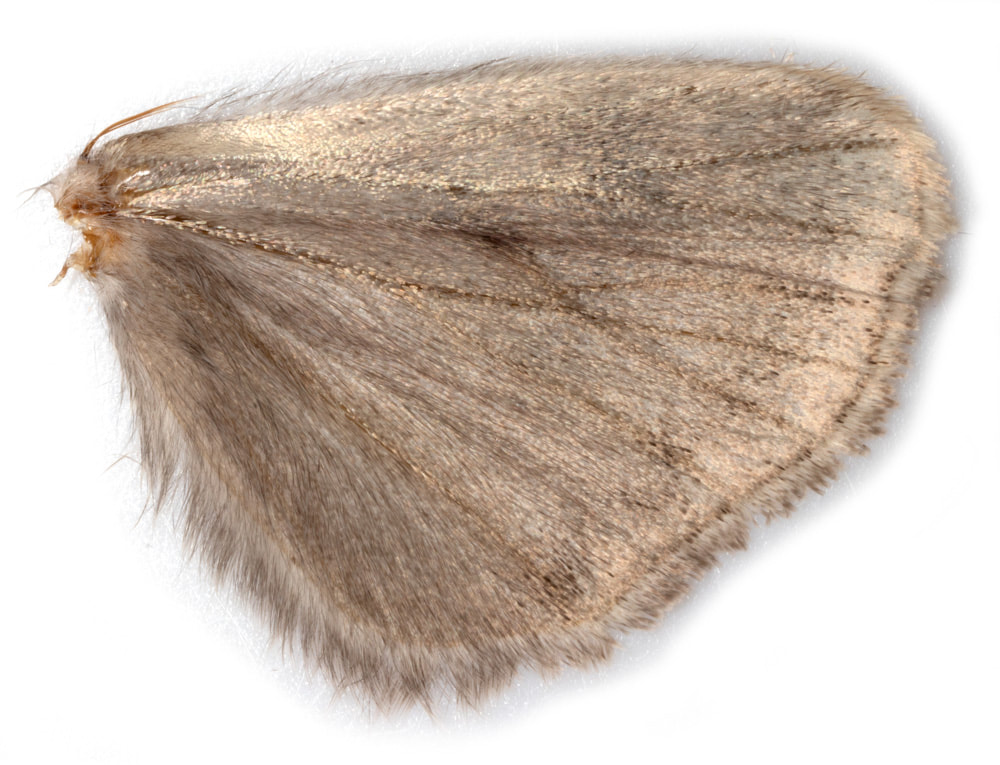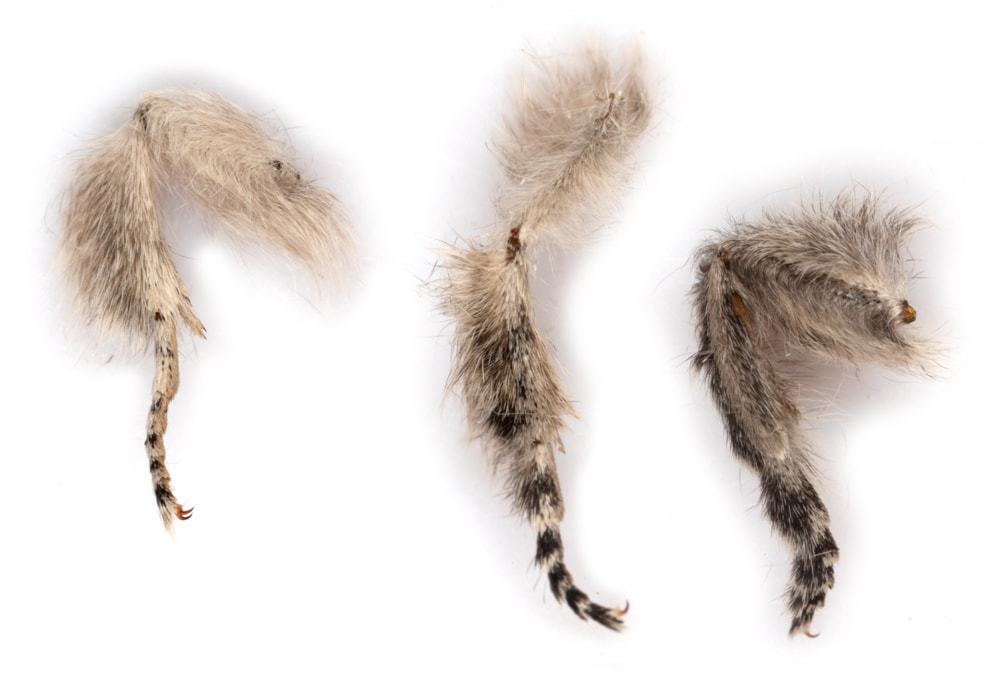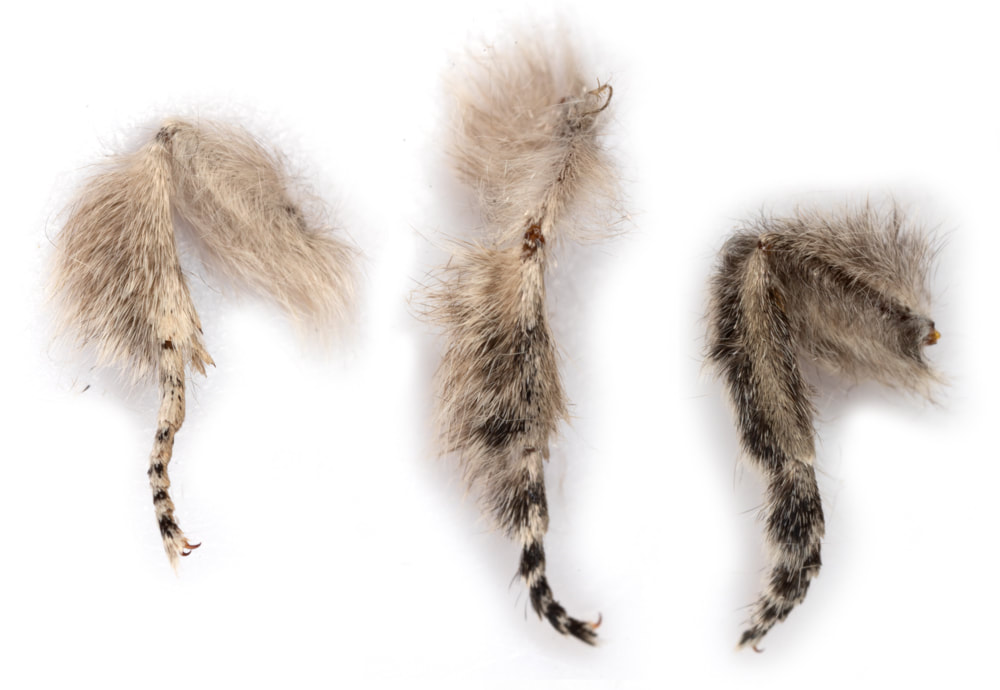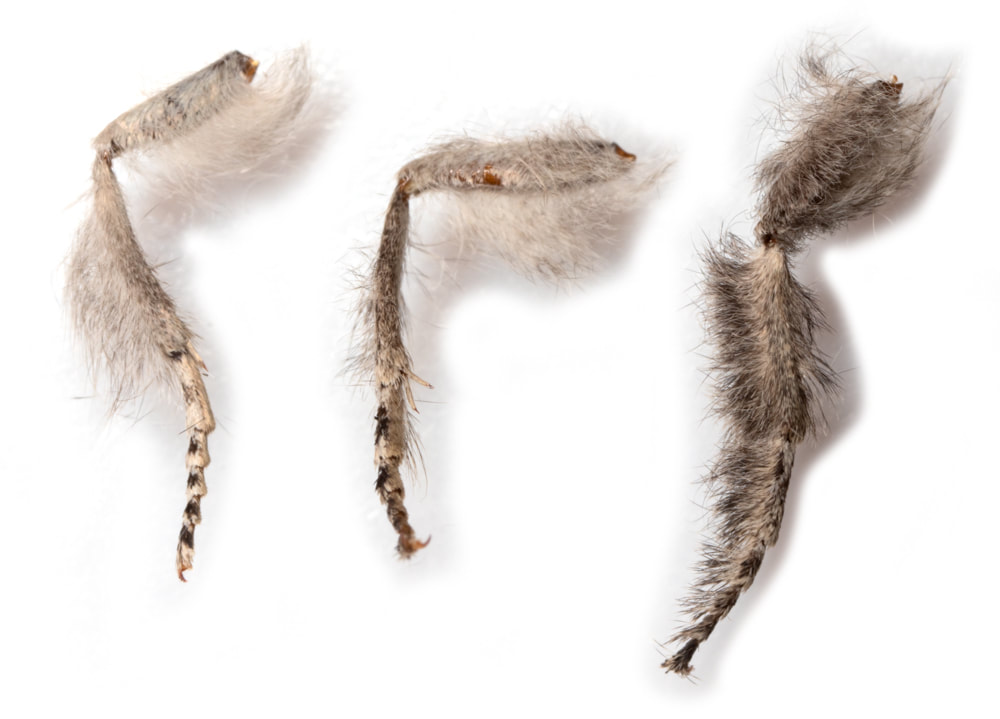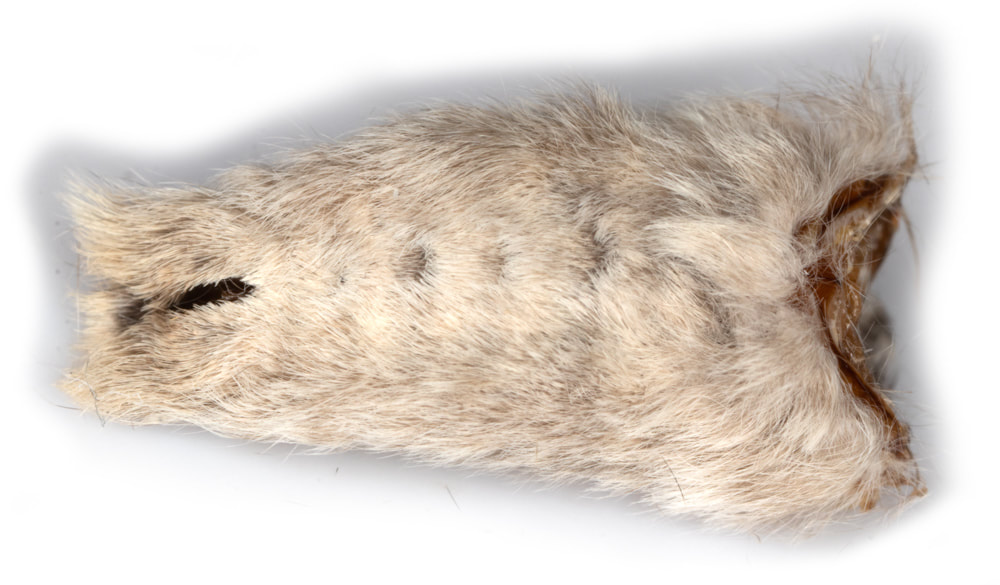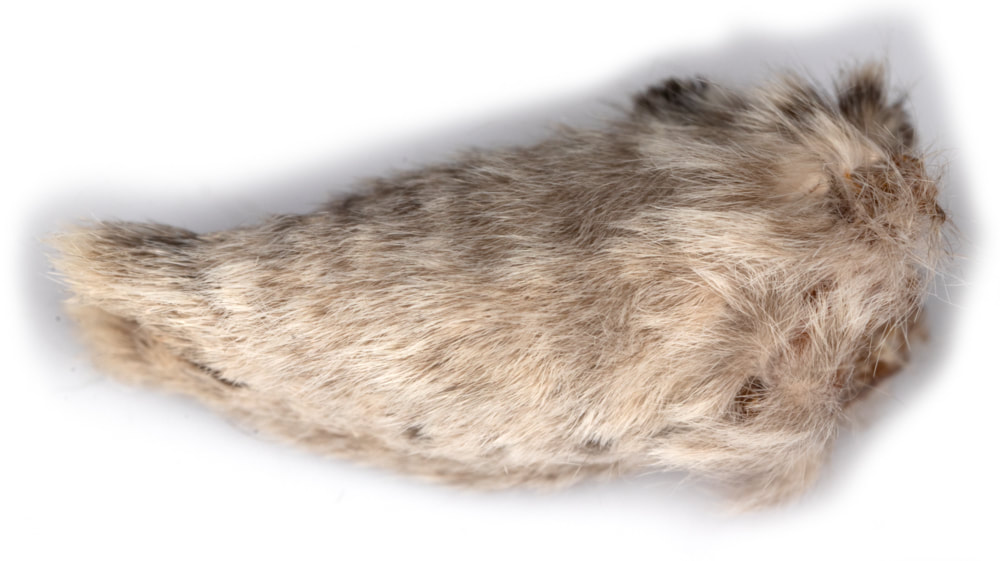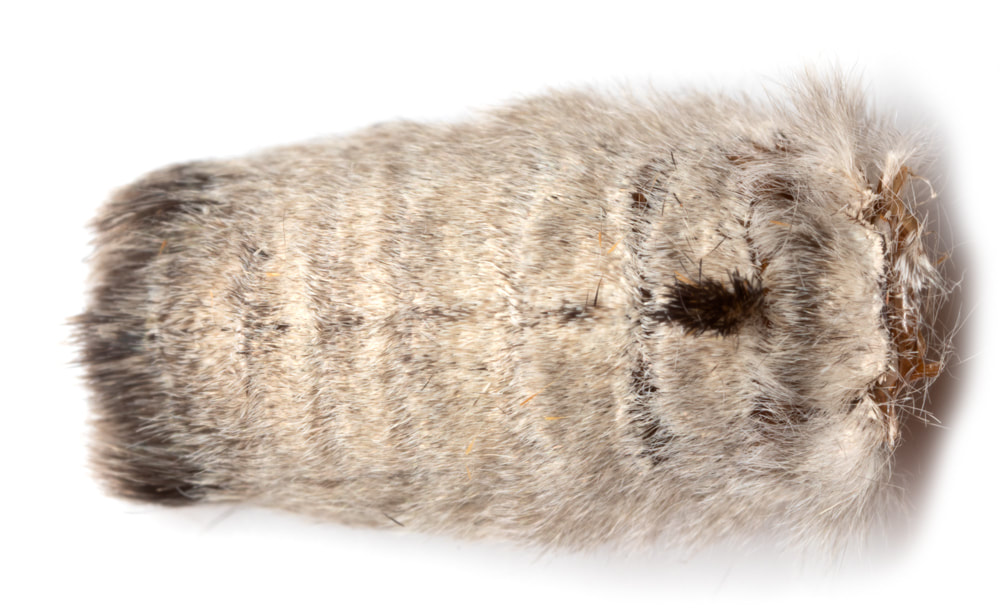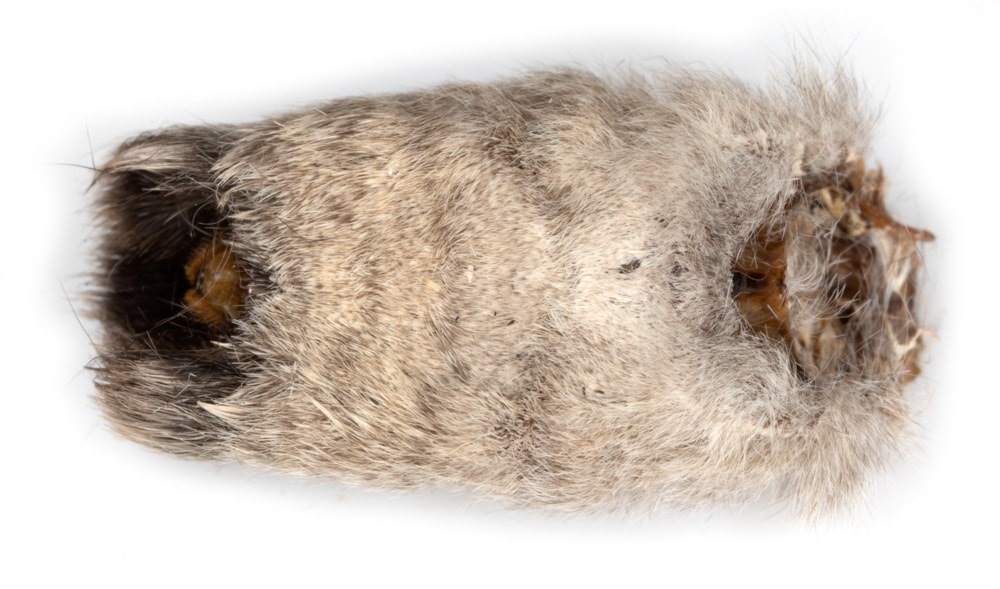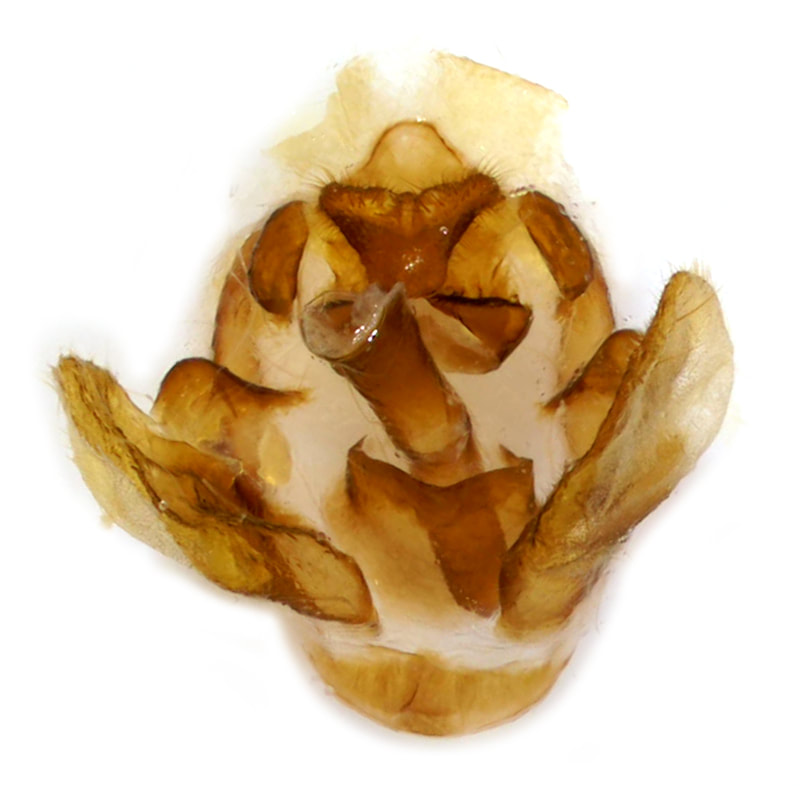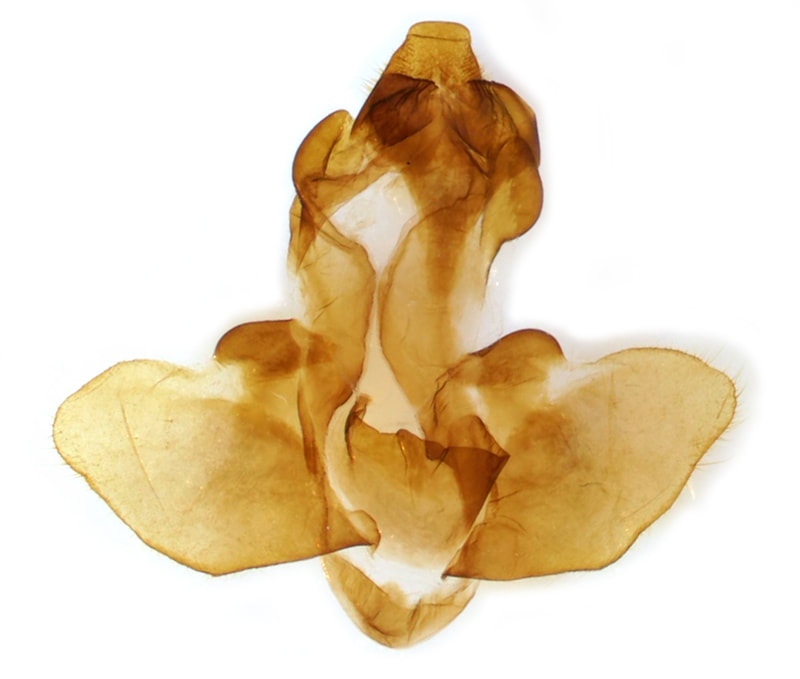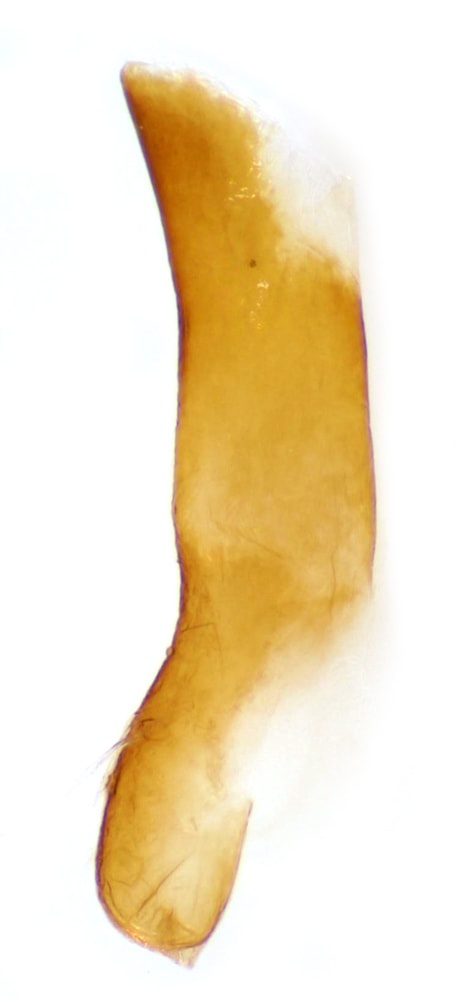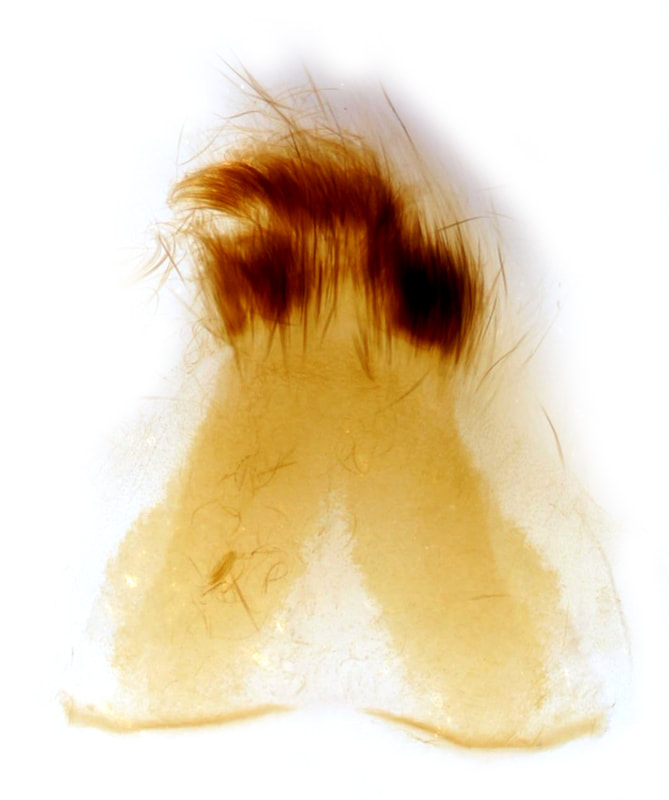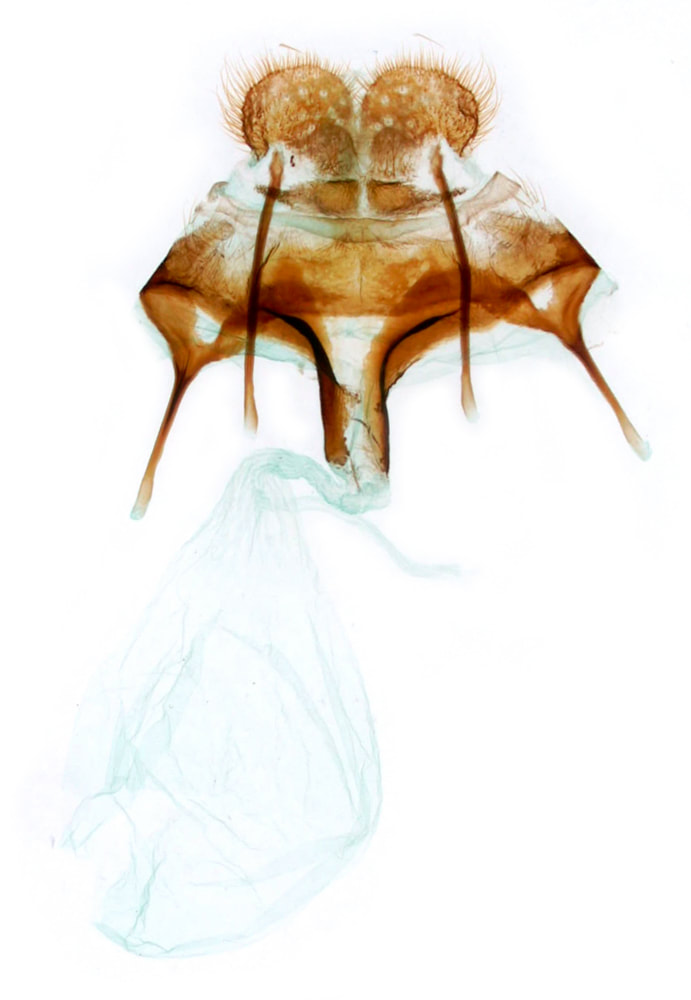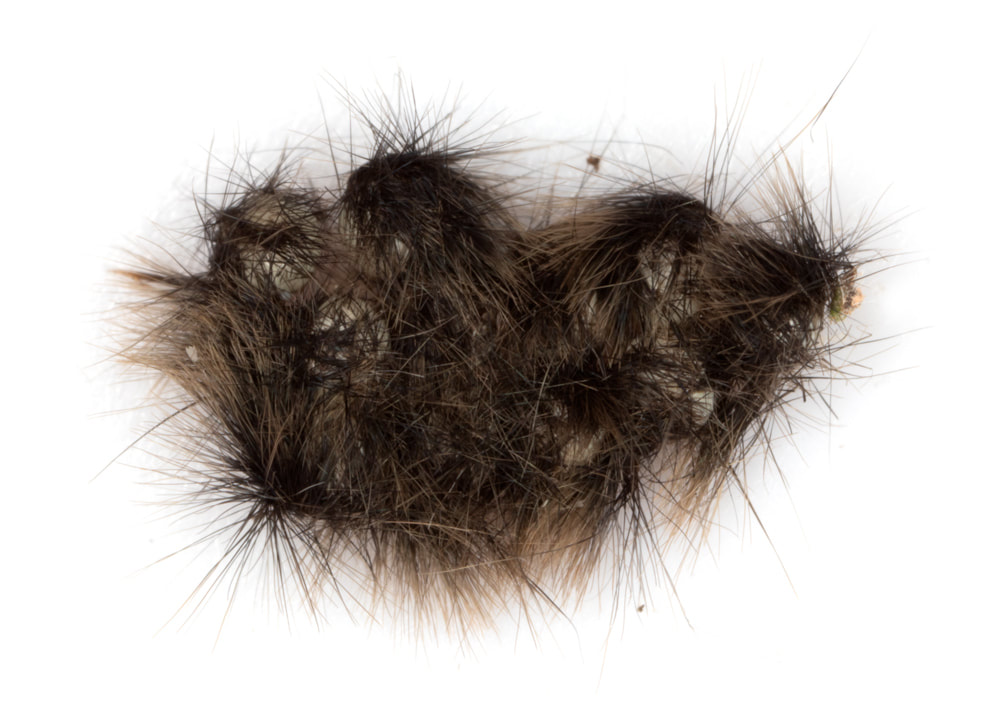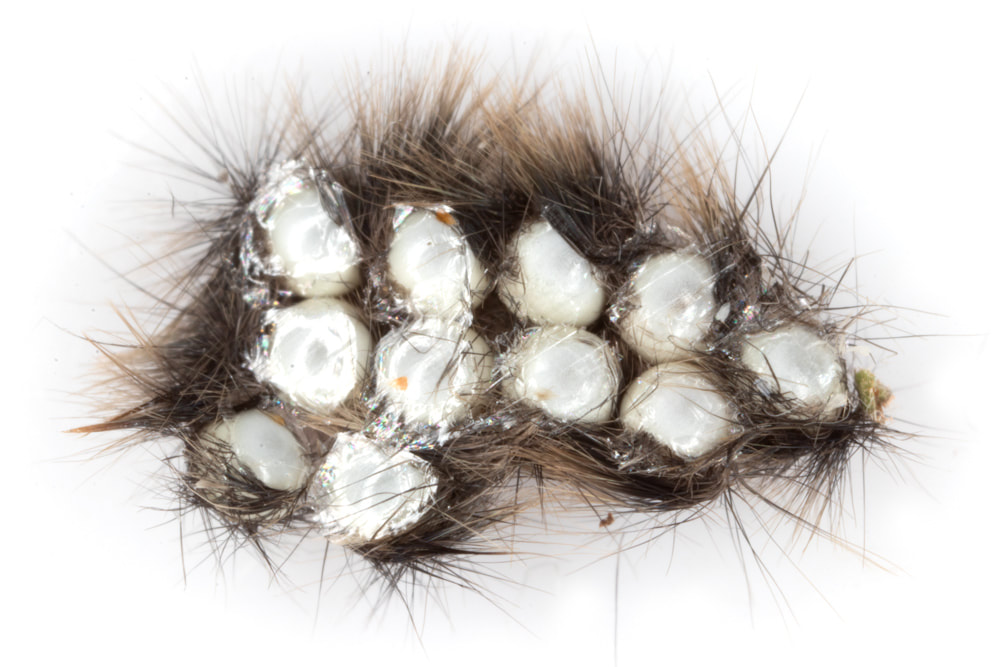72.016 Dicallomera fascelina (Dark Tussock)
fw: 18-28mm; Jul-Aug; heather (Calluna vulgaris) on heath and moor locally throughout GB, broom (Cytisus scoparia) on coastal shingle at Dungeness, also occurs on willows (Salix spp), bramble (Rubus fruticosa), hawthorn (Crataegus spp) and birch (Betula spp) and on coastal sand-dunes in NW.England
ID: Both Calliteara pudibunda (Pale Tussock) and Dicallomera fascelina (Dark Tussock) have a characteristic resting posture with the hairy forelegs stretched out in front of the head; both have strongly bipectinate antennae in the male, shortly bipectinate in the female and in both the female is larger and paler than the male. C.pudibunda flies May-Jun and is widespread whilw D.fascelinella flies Jul-Aug* and is largely confined to heath, moor and coastal shingle; it usually shows some orange blotches in the cross-lines and the male has grey antennae. In C.pudibunda the cross-lines lack orange; in the male the median fascia is contrastingly dark and the antennae are orange-brown.
* §1 and §2 were trapped in the first half of June!
* §1 and §2 were trapped in the first half of June!
§1 Dungeness, Kent; 11/06/2019; male; fw 19.7mm
§2 Dungeness, Kent; 11/06/2019; male; fw 19.5mm
§3 New Forest, Hampshire; 18/07/2020; female; fw 22.0mm
§4 Loch Rannoch, Perthshire; 13/06/2021; male
§5 Ballindalloch, Moray; 26/06/2021; male
§6 Ballindalloch, Moray; 26/06/2021; male
§7 Ballindalloch, Moray; 27/06/2021; male
§8 Ballindalloch, Moray; 27/06/2021; male
All images © Chris Lewis
§2 Dungeness, Kent; 11/06/2019; male; fw 19.5mm
§3 New Forest, Hampshire; 18/07/2020; female; fw 22.0mm
§4 Loch Rannoch, Perthshire; 13/06/2021; male
§5 Ballindalloch, Moray; 26/06/2021; male
§6 Ballindalloch, Moray; 26/06/2021; male
§7 Ballindalloch, Moray; 27/06/2021; male
§8 Ballindalloch, Moray; 27/06/2021; male
All images © Chris Lewis
Page published 30/06/2019 (§1&2) - dissection images added 22/01/2020 | §3 added 31/01/2021 | §4 added 10/10/2021 | §5-8 added 15/10/21
